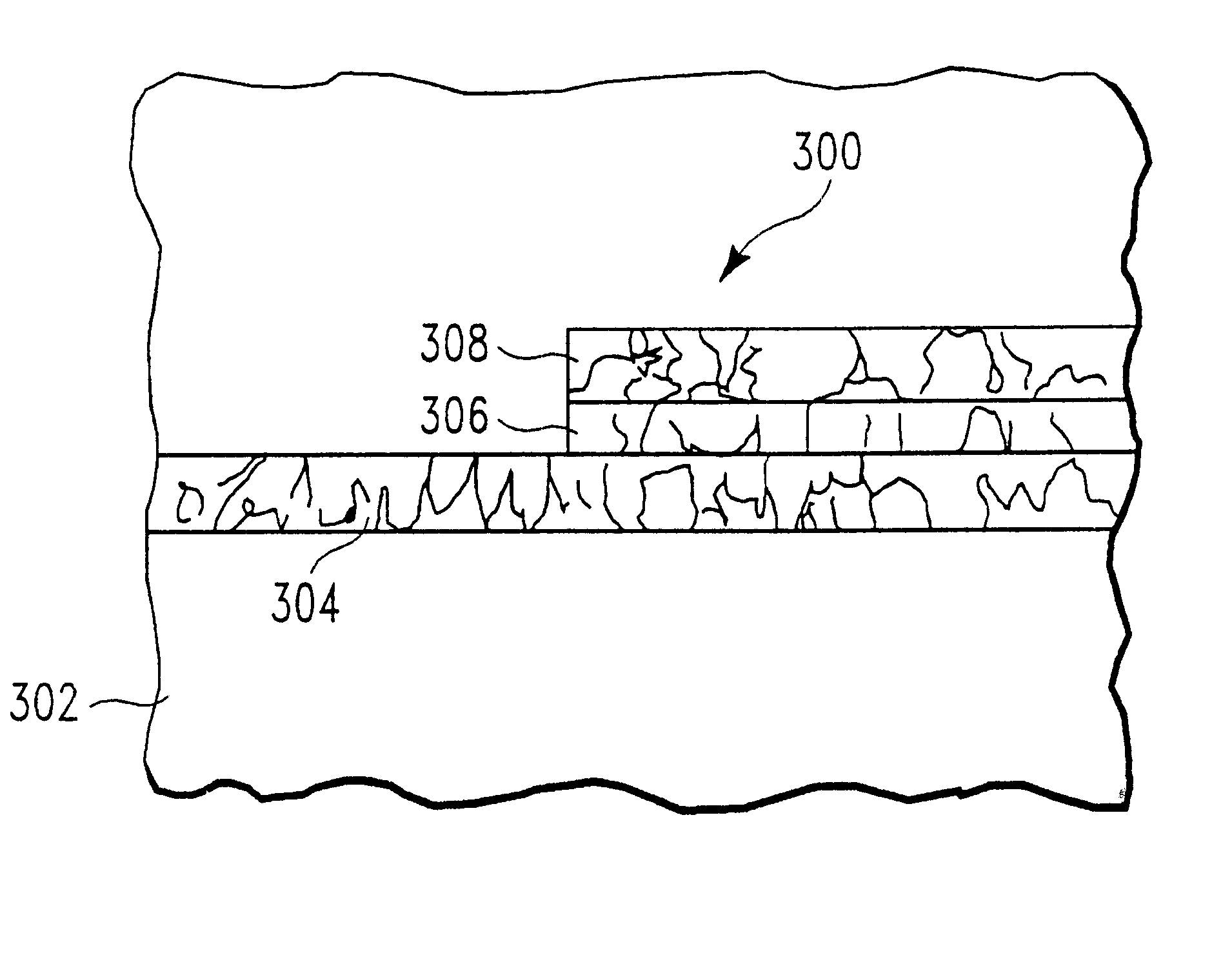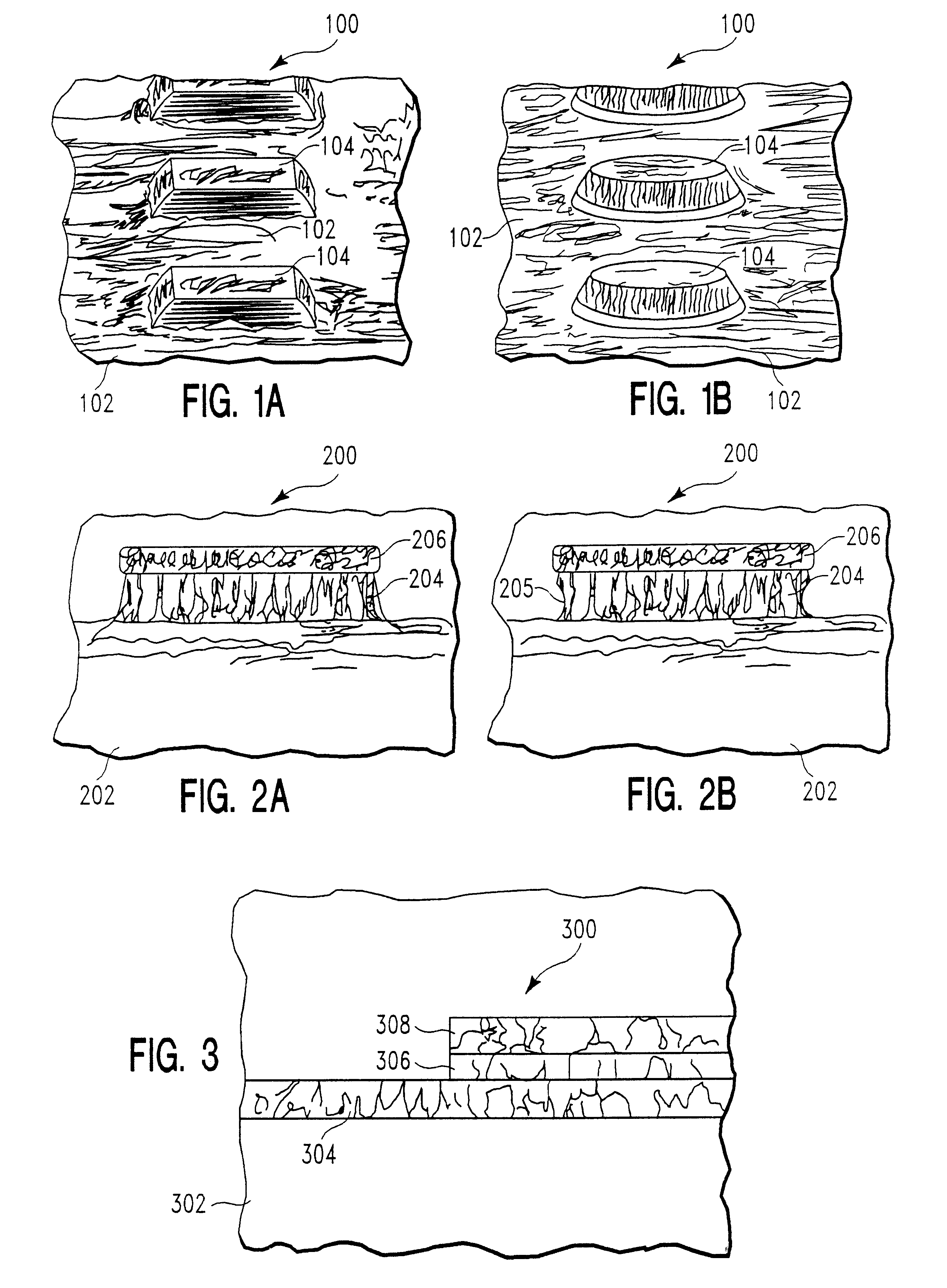Method of patterning lead zirconium titanate and barium strontium titanate
a technology of barium strontium titanate and zirconium titanate, which is applied in the direction of basic electric elements, semiconductor/solid-state device manufacturing, electric apparatus, etc., can solve the problem that ferroelectric materials typically exhibit polarization hysteresis
- Summary
- Abstract
- Description
- Claims
- Application Information
AI Technical Summary
Problems solved by technology
Method used
Image
Examples
example two
FIG. 3 shows a schematic illustrating a photomicrograph of an etched semiconductor structure 300, formed using the present invention. The etch stack prior to patterning included, from top of the etch stack toward the underlying substrate: an I-line photoresist having a thickness of 1.0 .mu.m (not shown); a masking layer of TiN having a thickness of 1,000 .ANG. (not shown); an upper electrode layer 308 of Ir having a thickness of 1,000 .ANG.; an interlayer 306 of PZT dielectric having a thickness of 1,500 .ANG.; a lower electrode layer 304 of Ir having a thickness of 1,000 .ANG.; and an underlying substrate 302 of SiOx. In this instance, the patterned TiN masking layer (not shown), which was used to transfer the pattern through a portion of capacitor structure including an upper electrode layer 308 of Ir, and interlayer 306 of PZT dielectric, both of which were overlying a lower electrode layer 304 of Ir.
The photoresist patterning was done using methods described in the art. The TiN ...
PUM
| Property | Measurement | Unit |
|---|---|---|
| pressure | aaaaa | aaaaa |
| temperature | aaaaa | aaaaa |
| temperature | aaaaa | aaaaa |
Abstract
Description
Claims
Application Information
 Login to View More
Login to View More - R&D
- Intellectual Property
- Life Sciences
- Materials
- Tech Scout
- Unparalleled Data Quality
- Higher Quality Content
- 60% Fewer Hallucinations
Browse by: Latest US Patents, China's latest patents, Technical Efficacy Thesaurus, Application Domain, Technology Topic, Popular Technical Reports.
© 2025 PatSnap. All rights reserved.Legal|Privacy policy|Modern Slavery Act Transparency Statement|Sitemap|About US| Contact US: help@patsnap.com


